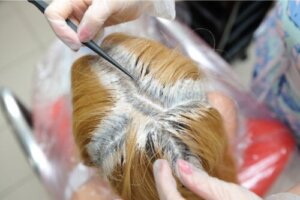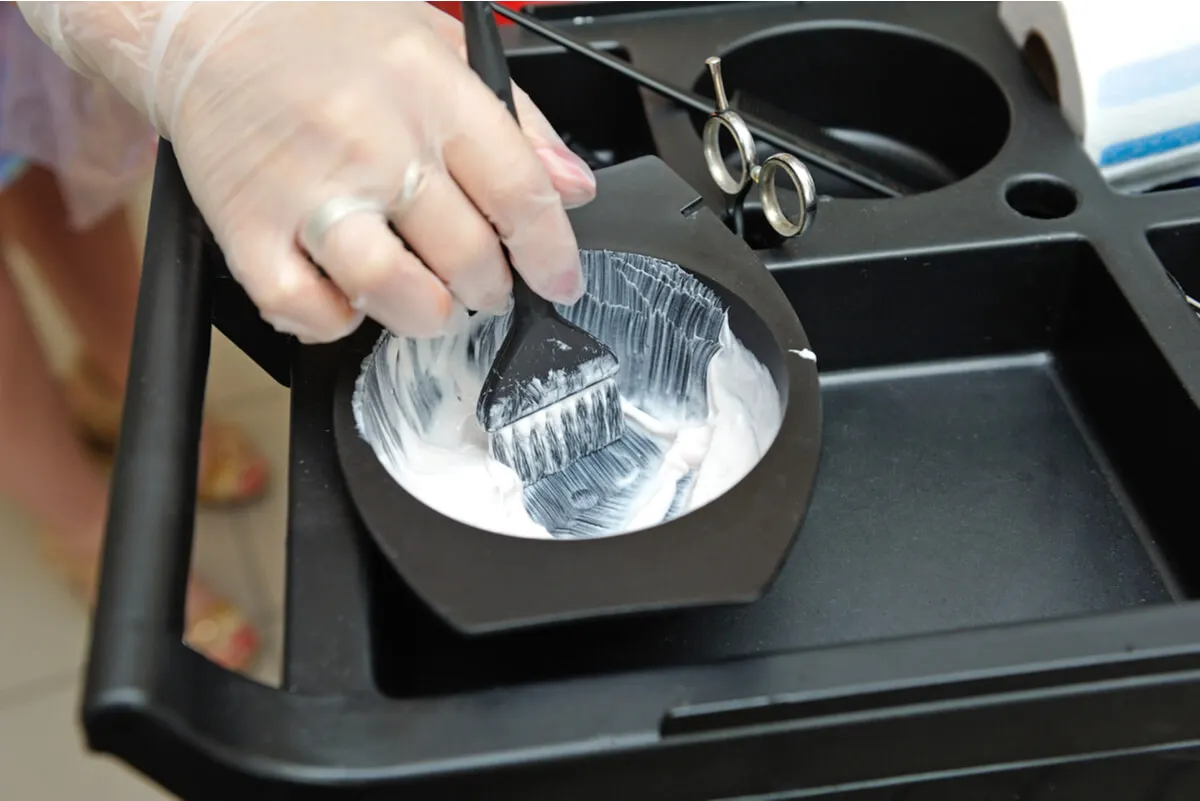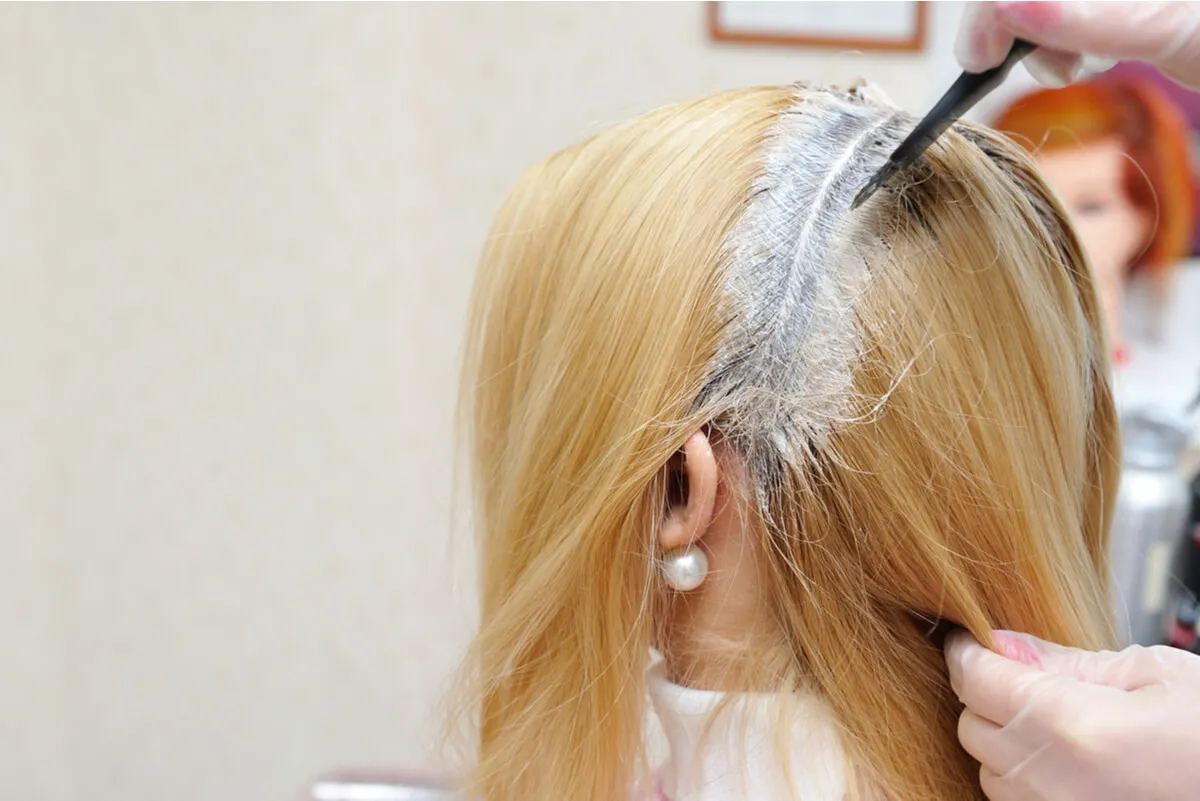The Main Mistakes When Bleaching Hair and How to Do It Correctly

Mistakes when bleaching the hair are frequent, since this is a chemical process to lighten the hair a few shades. Natural color is the result of melanin granules in the hair fibers. What bleaching does is destroy them.
Although at first glance it may appear to be a simple and harmless process, the reality is that these are chemicals that should be used with care. When bleaching the hair, there can be mistreatment of the hair. The protective layers of the hair are lifted and moisture is lost, leaving it dry, weak, and brittle.
Pre-care to reduce mistakes when bleaching your hair
It’s important to have a good product before applying it. Depending on their composition and potency, bleaches are divided into categories 1 and 2:
- Category 1 hair bleach is less potent. These are liquid or cream-based compositions with alkaline solutions of hydrogen peroxide which acts as an oxygen-generating agent. This oxidizes and discolors the melanin.
- Category 2 hair bleach powder compositions are made with ammonium, potassium or sodium salts, and carbonate. This is mixed with hydrogen peroxide to form a paste. With this, you can bleach up to 7 levels.
Use conditioner, masks, and oils
Before subjecting your hair to a damaging process such as bleaching, it’s advisable to take certain care. To reduce mistakes when bleaching your hair, natural oils can be applied to nourish your hair before bleaching. Almond oil is a good option; it acts as a sealant, creating a protective layer on the hair strand.
On the other hand, in his book “Manual de cosmética natural,” González says that argan oil is highly nutritious for hair, skin, and nails because it’s a natural antioxidant. Milk thistle and jojoba oils are also excellent for nourishment.

We think you may also enjoy reading this article: 13 Makeup and Hairstyle Tricks to Save Time in the Mornings
Get the right advice from a professional
It’s always a good idea to talk to a trusted professional about the subject. This could provide valuable information, such as how long you should wait before bleaching.
Depending on whether your hair was subjected to any chemical process in the last month, sometimes you have to wait a certain amount of time that will be recommended by the specialist. This is to allow the hair to heal so that you don’t make a typical mistake when bleaching the hair, which leads to over-drying.
You should also avoid using heat tools, such as curling irons or hair straighteners. Also, don’t wash your hair before bleaching. The oilier it is, the better. However, the professional should always have the last word.
Common mistakes when bleaching hair
It’s common to see mistakes when bleaching hair. Although it may seem like a simple process, it’s advisable to have it done by a professional. However, you can avoid the mess with a few simple measures.
1. Not fully rinsing the product
When you leave traces of bleach and apply dye, there will be no even coverage because it will not penetrate the cortex of the hair. That’s why you should wash with plenty of water and shampoo to remove the bleach.
2. Not preparing the right amount of formula
When we want to make the formula, we often wonder how much we should prepare. This is especially the case if we have long hair. If we make too much or all of the mixture from the beginning, it will lose power, and when we apply it, it won’t be as effective. This is a mistake when bleaching hair that can cause it to be uneven.
You should prepare 30 grams or 60 grams, depending on how much hair you have. Apply the active formula to your hair.
3. Not having the right materials on hand
Remember that for bleaching you need the bleach, peroxide of the volume you need, a bleaching brush, a hair clip or clips, plastic gloves or whatever you have available, a plastic bowl, a shower cap, shampoo, conditioner, and a towel, and old clothes.
Ideally, you should have the necessary materials at hand. Avoid missing something in the middle of a bleaching process or running out of product.
4. Common mistake when bleaching hair: Not doing a hair analysis
Before bleaching your hair, it’s necessary to perform an analysis. All hair is different, so the procedures are unique.
For this, you need the help of an expert, who will judge what you need based on the pigments you’ve applied previously as well as the porosity and elasticity, structure, and overall health of your hair.
5. Not applying a moisturizing treatment after the process
The hair needs treatment after a chemical process such as bleaching. It’s recommended to use oils and moisturizing products. So, you should apply them to ensure the health of your hair before and after.

6. Not knowing how to properly remove black and red tones
Black and red tones are the most difficult to remove. There are multiple options to do so, but this should be done by a professional to reduce bleaching mistakes. Otherwise, the result can end up being disastrous.
The methods to remove dark tones are dangerous for the hair. This is because you will need an abrasive component to remove the particles.
Like this article? You may also like to read: Check Out These 12 Types of Hair Spray and How to Use Them
7. Going platinum when your hair can’t handle it
If you want to go platinum, here’s the important news: not all hair can withstand this level of lightening. Achieving it requires a final – and eighth – level of treatment. However, not all hair is healthy after undergoing such a process.
Consider a professional to avoid mistakes when bleaching your hair
If you’re thinking about bleaching your hair at home, you might want to consider getting it done by a professional instead. There are many factors to look at, such as the shades you want to lighten, how much you need, and what treatments to apply before and after.
The worst thing that can happen is that you can damage your hair irreversibly when bleaching it. So the best thing to do is to go to a professional who will evaluate your hair and do the procedure. You don’t need to be afraid if it’s done by expert hands. Find a good hairdresser and change to the look you dream of safely.
All cited sources were thoroughly reviewed by our team to ensure their quality, reliability, currency, and validity. The bibliography of this article was considered reliable and of academic or scientific accuracy.
- Goyanes Á. Manual de cosmética natural. 2011. https://www.academia.edu/39645931/Manual_de_cosm%C3%A9tica_natural
- Said H. Composición para aclarar y colorear simultáneamente el cabello utilizando tintes ácidos y
básicos estables a la decoloración. 2 562 020. 02.03.2016
This text is provided for informational purposes only and does not replace consultation with a professional. If in doubt, consult your specialist.








